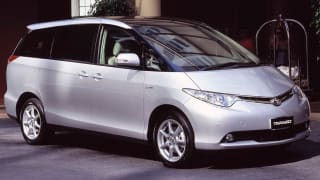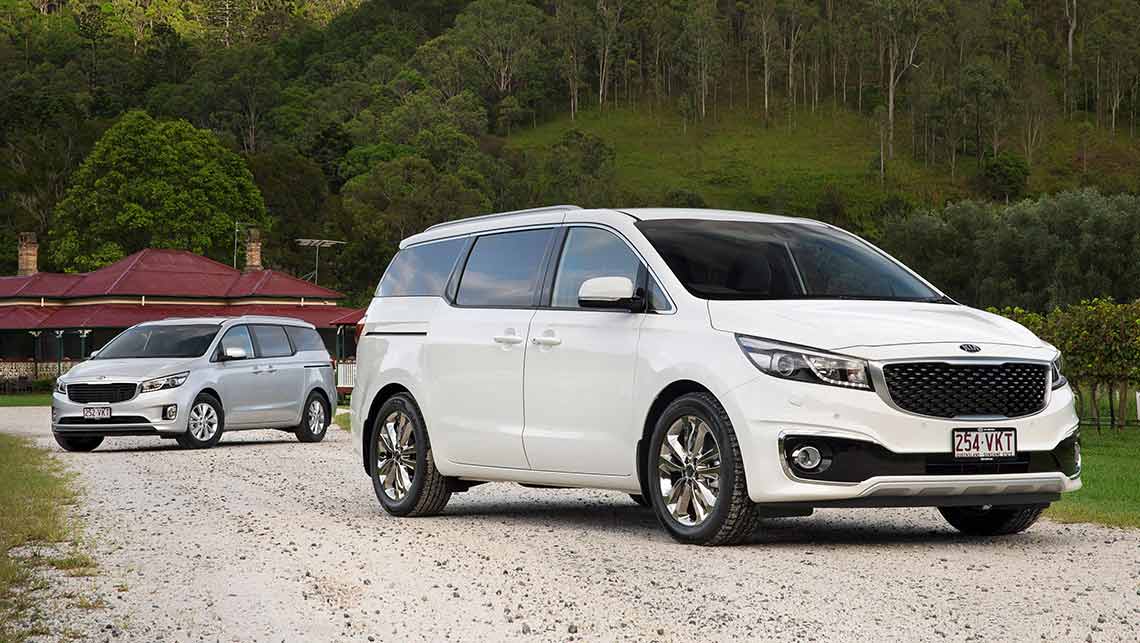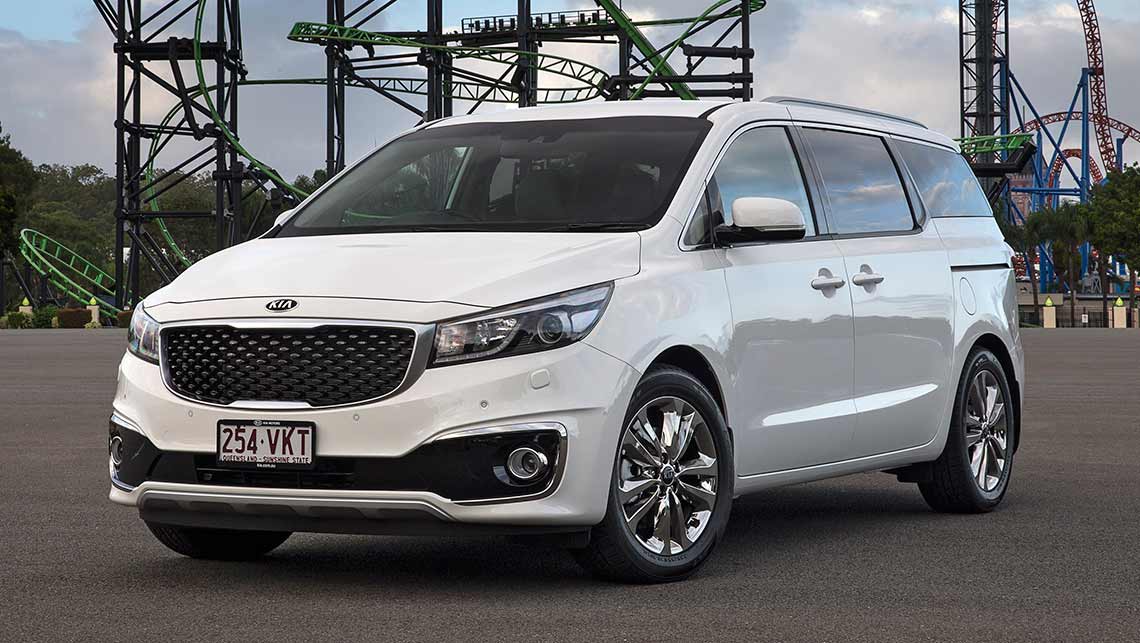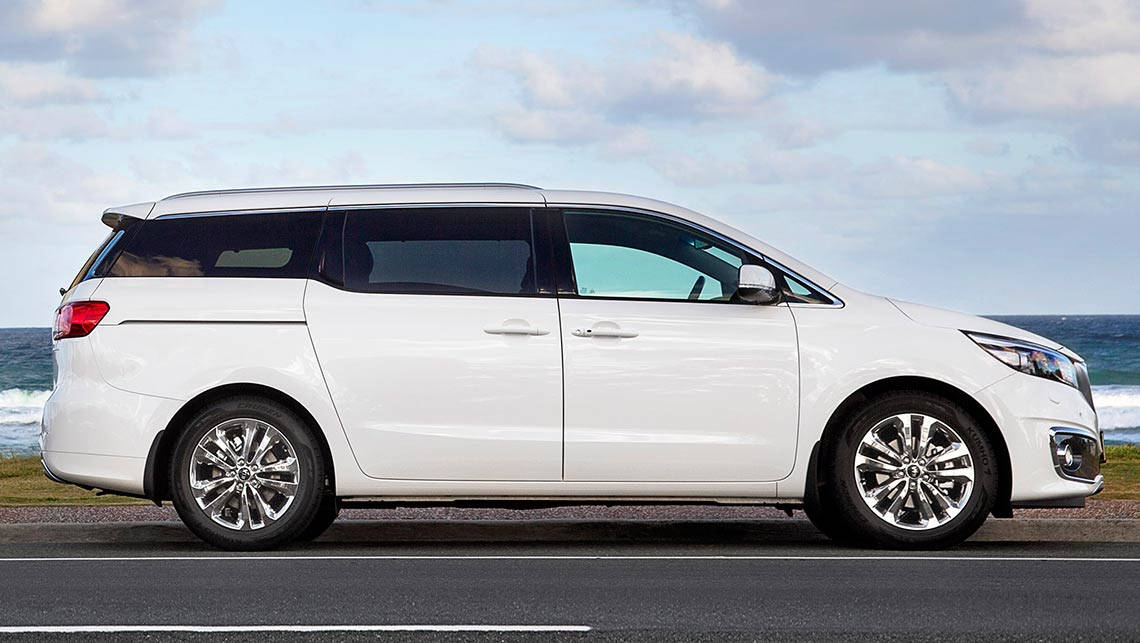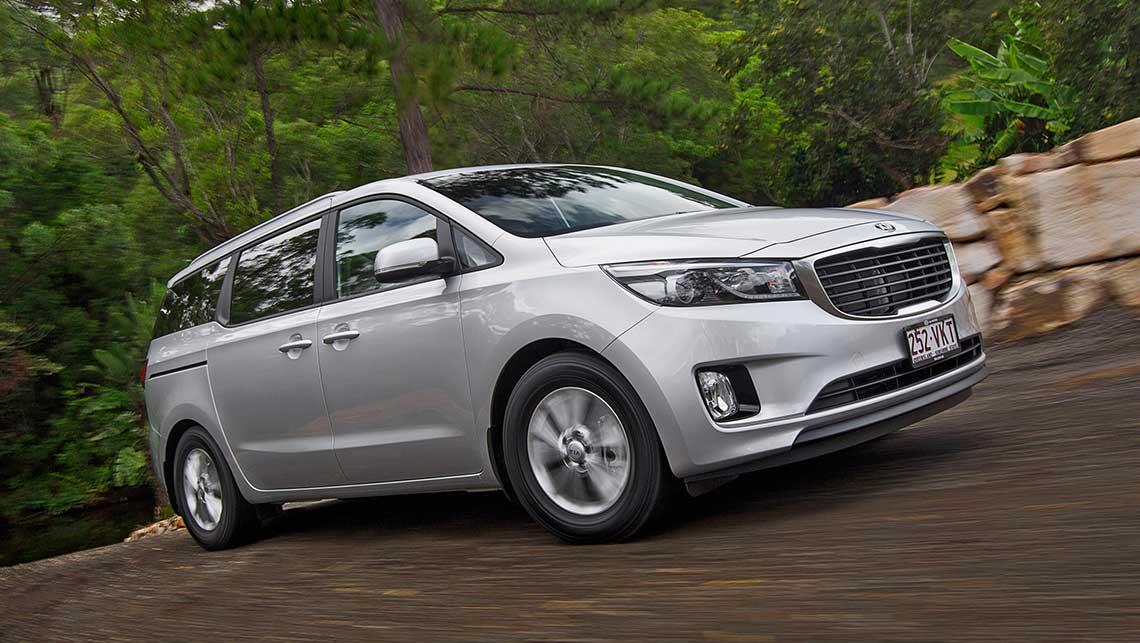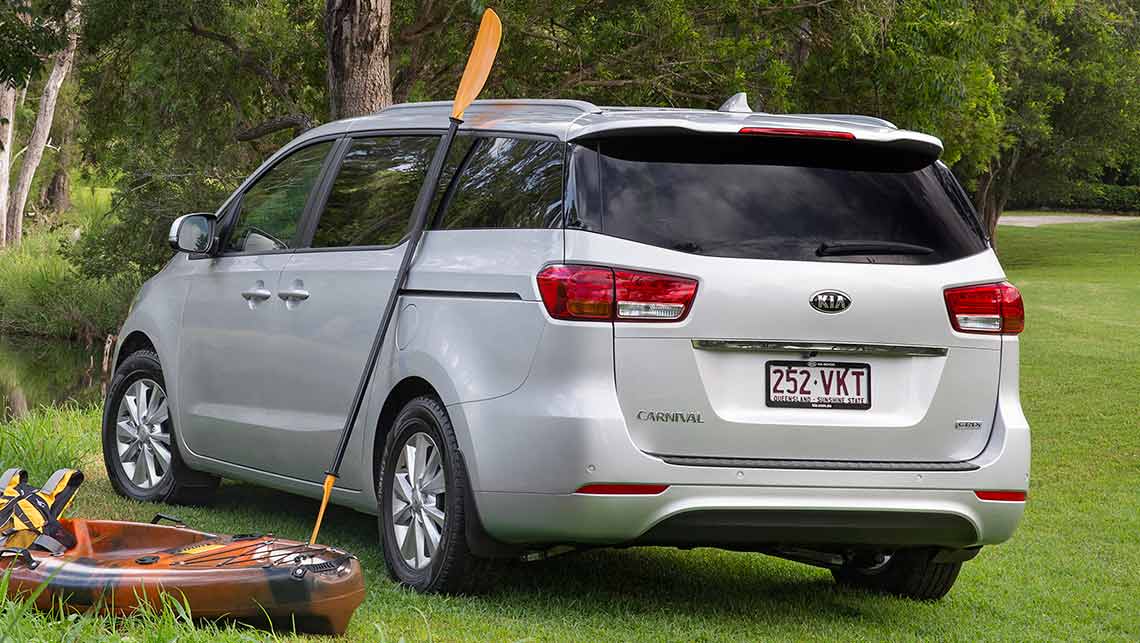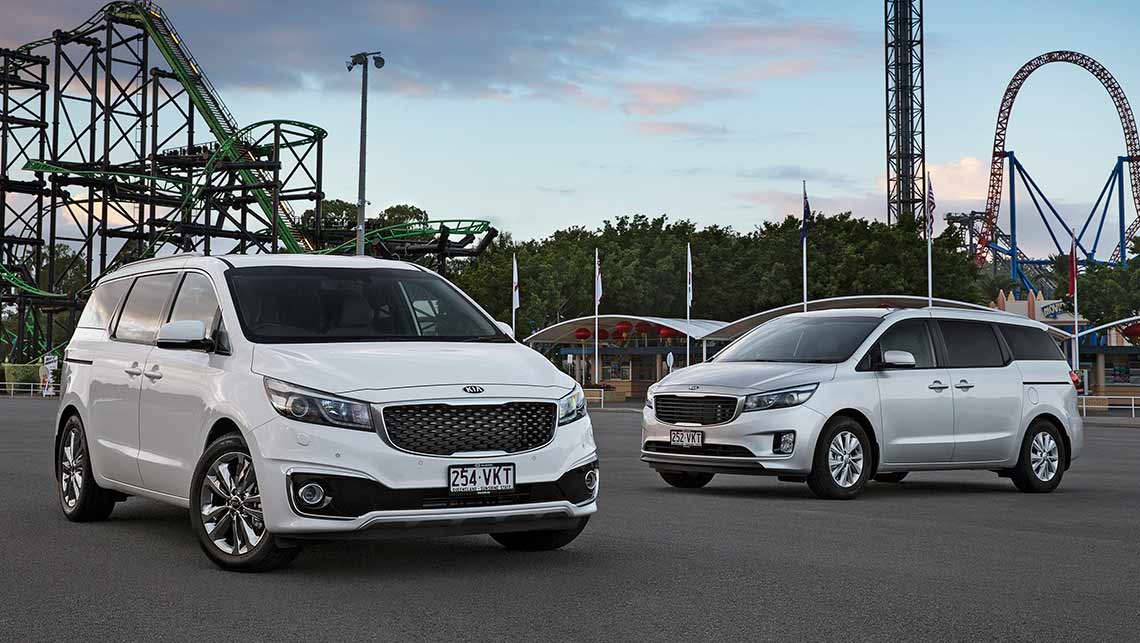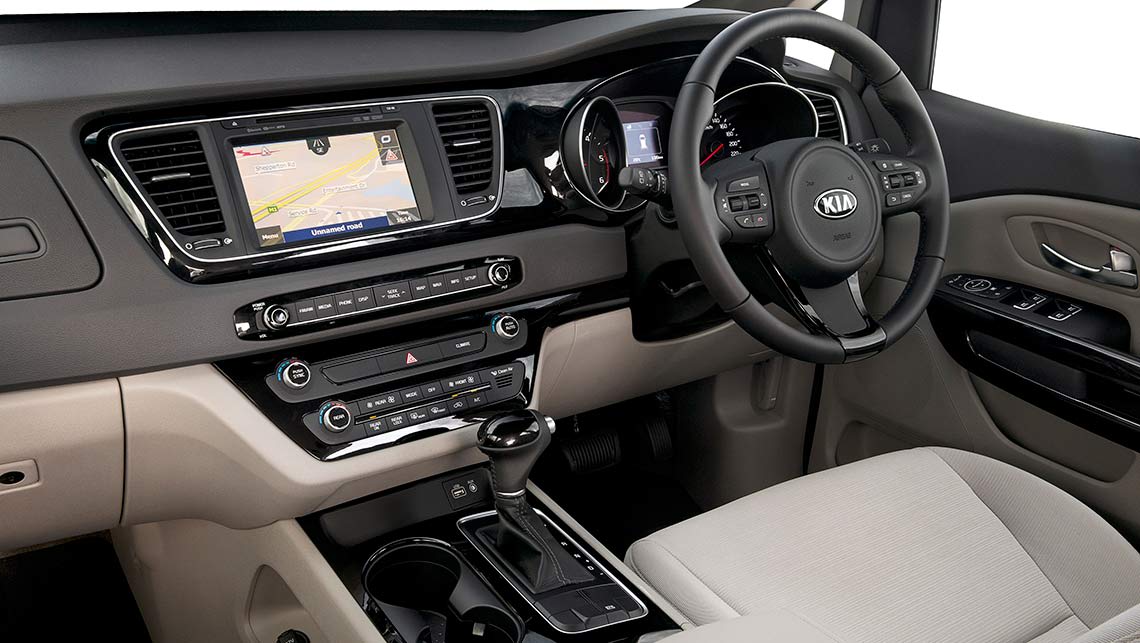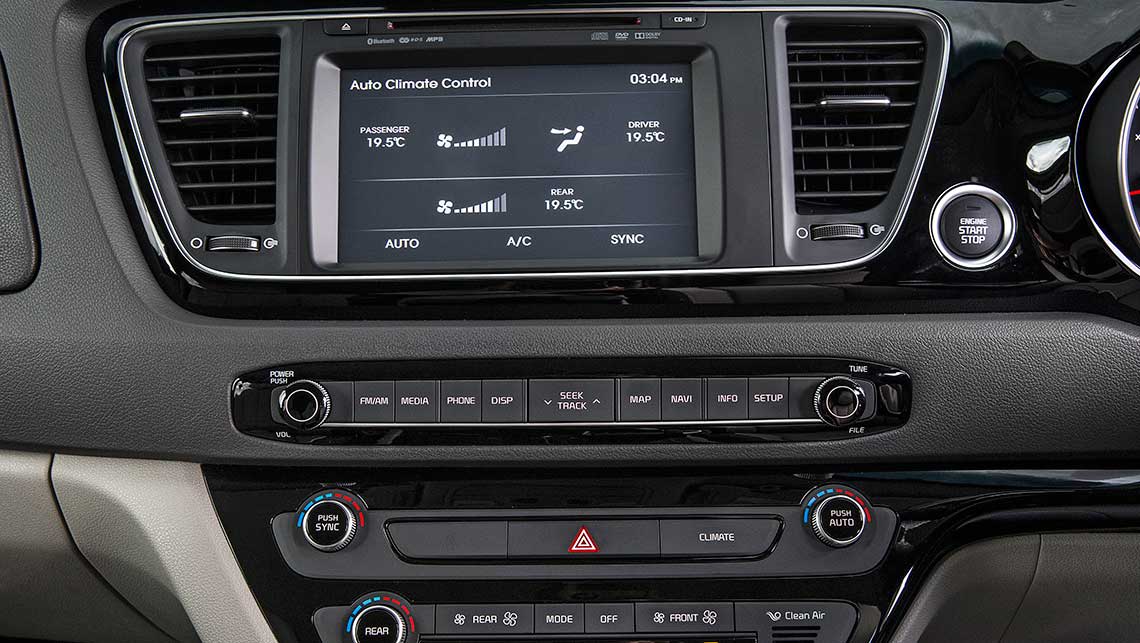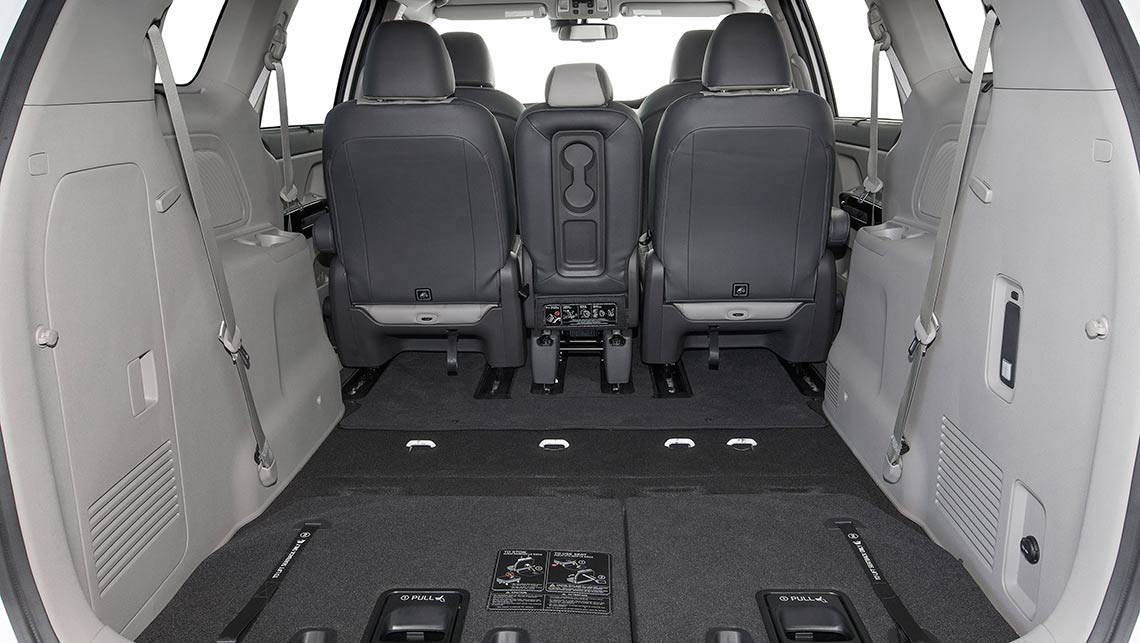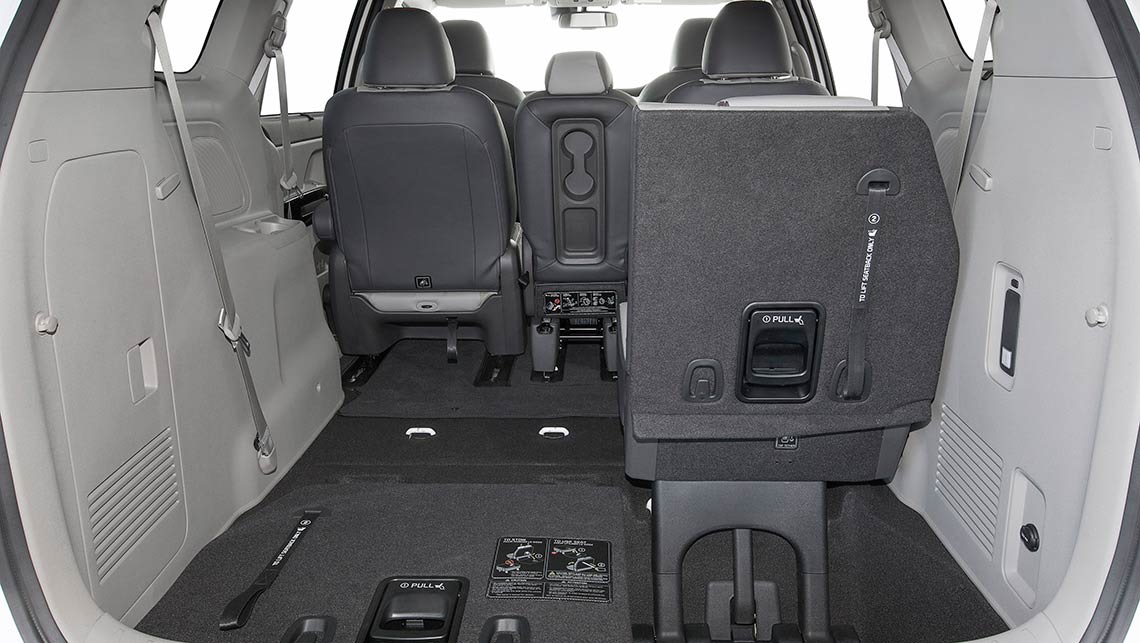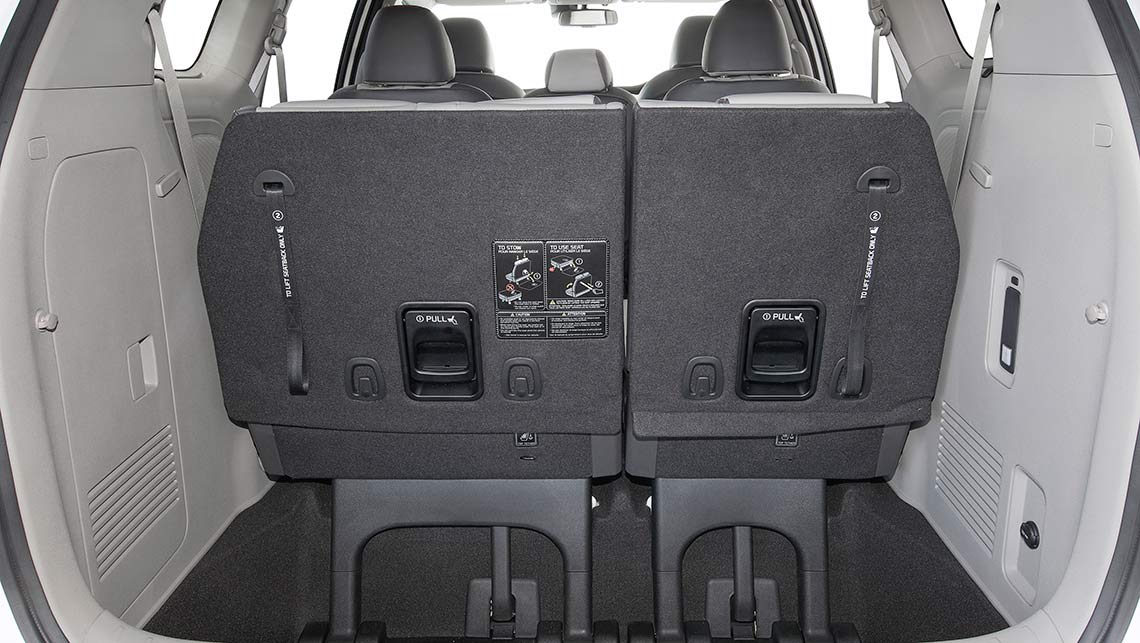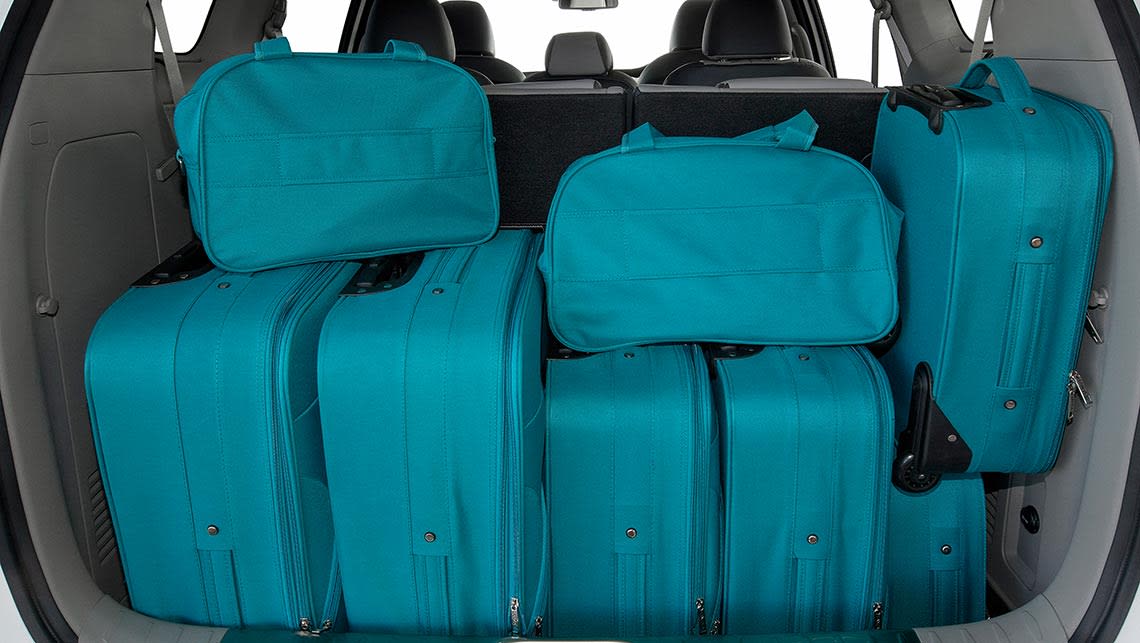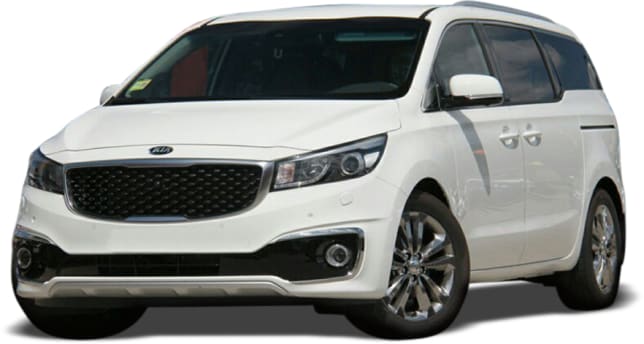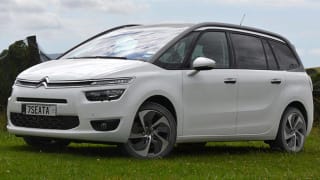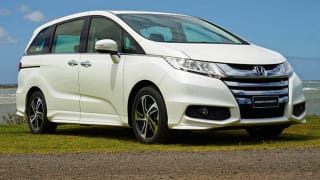A tropical cyclone on a family holiday? As far as people mover tests go, Kia couldn’t have scripted the new Carnival’s Australian launch better.
Timed to perfection with Severe Tropical Cyclone Marcia reaching landfall in Queensland last week, this act of God led to the classic scene where Mum wants to turn back, but Dad’s still hell-bent on getting to Walley World.
Admittedly the worst of Marcia’s devastating fury was several hundred kilometres away, but we were still faced with torrential rain and road closures left, right and centre that caused the more sensible among us to wince.
Explore the 2015 Kia Carnival range
The all-new third-generation Carnival boasts a list of improvements that would fade the metallic pea paint on a Wagon Queen Family Truckster, so we considered the Kia worthy of forging ahead.
The previous Carnival soldiered on for more than nine years, topping the sales charts in its segment until 2014 when it was scuppered by the freshly-launched Honda Odyssey.
Now sticking to one full-size bodystyle, the new Carnival drops the ‘Grand’ prefix of the second-generation. It’s still grand in size, but there’s no longer a short-wheelbase version.
Kia is banking on the new model to reclaim top-selling people mover status, and on paper it looks to pack enough punch to do just that.
Design
The new Carnival is the final model in the Kia lineup to adopt the full Shreyer-era design language, and few will dispute its visual appeal. Yes, the pen that drew the original Audi TT can also turn itself to a big van.
Maintaining eight-seater status across the range, the new Carnival may appear larger than ever, but is actually 15mm shorter in length and 55mm lower in height.
However, a 40mm longer wheelbase and smarter packaging have boosted legroom for both rear rows of seats as well as cargo capacity.
Up the front, there’s a logical dashboard layout, and a good quality feel to the materials throughout. Kia is now several generations beyond its cheap and fragile origins.
From the driver’s seat there’s excellent visibility for such a large vehicle, thanks to relatively narrow pillars and quarter windows at the front.
The interior forgoes walk-through capability from the front seats for a useful centre console with two large cavities – a main 18.8-litre bin that can swallow a full-size iPad, and a 1.4-litre upper tray for smaller items.
There are plenty of other storage cavities throughout the cabin, including ten cupholders and four bottle holders.
Like the previous model, second-row windows are electrically retractable, and a child observation mirror and overhead air vents for both rear rows are also welcome bonuses.
The front seats are broad and comfortable, and both rearward rows will cater to adults, even with the sliding centre row set to its most restrictive legroom positions.
Access to the third row is made possible by a single action lever, and the generous gap created is 182mm wider than before at waist height.
There are four top-tether anchorage points for child seats, but only three ISOFIX mounts due to limitations of the seat folding mechanism.
With the third-row seats upright, cargo space has grown by 77 litres to a massive 960 litres. With the third row flat, this expands to 2220 litres and a whopping 4022 litres with both rows folded. Or, enough room for a cyclone-shielded family picnic.
A spacesaver spare wheel is hidden under the second row of seats, and Kia cleverly provides a canvas bag to store the dirty full-size flat inside the cabin.
The Korean-built Carnival rides on a stretched version of the new platform that underpins the third-generation Sorento due in Australia later this year.
Maintaining a front-drive layout and all-independent suspension, the new Carnival also benefits from increased use of high-tensile steel to boost torsional stiffness by 74 per cent. Kerb weight remains the same, however at around 2.1 tonnes.
Like Cyclone Marcia’s ever-changing sky, Australian Carnival colour choices are limited to white, silver, charcoal, blue and black, with all bar white commanding a $695 premium. Kia Australia’s product planning boss Jeff Shafer assures that more colours can be added if the demand is there.
Pricing
With the same S, Si, SLi and Platinum trim levels as before, the new Carnival’s design improvements have been matched by price rises of between $2000-5000 across the lineup.
The Carnival S kicks off at $41,490, stepping up to the Si at $45,490, the SLi at $49,990, and the range-topping Platinum now $57,490.
All models are also available in diesel, with the price premium narrowing from the previous $4000 to just $2500.
Kia expects the S and Si to be the volume-selling grades, sharing 35 per cent of volume each, with the SLi making up around 23 per cent, and the Platinum just seven per cent of sales.
Engines and Transmissions
The Carnival’s default engine choice is a new direct-injected 3.3-litre petrol V6, which gains just 4kW over the old 3.5-litre to produce 206kW/336Nm, and max torque is developed 700rpm later. Combined fuel consumption also surprisingly rises by 0.7-litres to 11.6L/100km.
The optional 2.2-litre turbodiesel is a development of the previous unit, with similarly minor output gains of 3kW and 11Nm to now total 147kW/440Nm. Max torque is delivered 250rpm earlier at 1750rpm, and combined fuel consumption is marginally improved by 0.4-litres to 7.7L100km.
While the diesel’s economy will help it achieve a 1039km range from its 80-litre fuel tank, its combined figure is still pipped by the 7.6L/100km of the petrol 2.4-litre four in the Honda Odyssey VTi.
All Carnivals are paired with a six-speed torque converter auto, but there’s no stop/start or energy recovery tech to be seen.
Kia projects 75 per cent of owners will opt for petrol power initially, but expects more buyers will sway toward the oiler given the relatively minor price premium and widened efficiency gap.
Driving
Like all current Kias, the new Carnival has been treated to a local suspension tune by chassis guru Graeme Gambold.
This means specific dampers and springs, plus a unique steering rack and bushings, with a different setup to suit the weight characteristics of each engine.
Mr Gambold has once again excelled with the suspension settings, making the most of the new Carnival’s low ride height and wide-track stance for a result that both rides well and feels stable through corners.
Mid-corner bumps are also well disguised thanks to the independent rear end, and the whole package is more relaxed at speed than most large SUV alternatives – including the Sorento.
Despite using hydraulic assistance and localised components, the steering doesn’t offer much feel - particularly at low speeds.
When hurried on the very wet roads on test, this lack of connection made it difficult to gauge the front tyres’ adhesion limits. This is not likely to be an issue at sedate speeds, however.
The new V6 sings a merry tune when revved, which is necessary if you’re asking for its full potential given its peaky power delivery. It will overtake up hills with ease though, and is more than up to the task of hauling the 2.1 tonne Carnival.
The diesel is ultimately not as fast as the V6, but the accessibility of the torque makes for a generally more relaxed experience. It feels stronger underfoot in most situations, and the difference in fuel consumption could well justify the $2500 premium – depending on how long you plan to keep it.
The torrential rain hardly made life easy on our Carnivals, but both drivetrains were impressively quiet from the inside at a constant highway cruise. The howling crosswinds also failed to unsettle the slab-sided body.
It’s fair to say that in dry weather, the Carnival should be an effortless long-distance tourer.
Safety
Standard safety features across the Carnival lineup include six airbags with curtain airbags covering all three rows, a reversing camera and rear parking sensors.
Top-spec Platinum variants score active cruise control, front parking sensors (also fitted to the SLi), forward collision warning, lane departure warning, blind-spot monitoring, auto high-beams and rear cross-traffic alert.
However, like the Honda Odyssey, Toyota Tarago and Citroen Grand C4 Picasso immediate rivals, there is no auto emergency braking (AEB) function available.
It’s also worth noting that the Platinum’s extra safety kit isn’t even available as an option on lesser models.
The new Carnival will initially only be eligible for a four-star ANCAP safety rating as it lacks second-row seatbelt reminders. Kia Australia expects that cars built from June onwards will be fitted with the safety device and will therefore qualify for a maximum five-star rating.
